This week our friend Mitchell Ratner, the senior teacher at Stillwater Mindfulness Practice Center will facilitate. He says:
Dear Friends,
I have been captivated for two weeks by a Dharma talk on True Happiness that Thich Nhat Hanh (Thay) gave in 2005. He began by clarifying what he means by happiness:
Happiness is a practice. We should distinguish between happiness and excitement, and even joy. Many people in the West, especially in North America, think of excitement as happiness. They are thinking of something, or expecting something that they consider to be happiness, and, for them, that is already happiness. But when you are excited you are not really peaceful. True happiness should be based on peace, and in true happiness there is no longer any excitement.
Then he explained how we must train ourselves to be happy:
You have to cultivate happiness; you cannot buy it in the supermarket. It is like playing tennis: you cannot buy the joy of playing tennis in the supermarket. You can buy the ball and the racket, but you cannot buy the joy of playing. In order to experience the joy of tennis you have to learn, to train yourself to play. In the same way, you have to cultivate happiness.
Walking meditation is a wonderful way to train yourself to be happy. You are here, and you look in the distance and see a pine tree. You make the determination that while walking to the pine tree, you will enjoy every step, that every step will provide you with peace and happiness. Peace and happiness that have the power to nourish, to heal, to satisfy.
There are those of us who are capable of going from here to the pine tree in that way, enjoying every step we make. We are not disturbed by anything: not by the past, not by the future; not by projects, not by excitement. Not even by joy, because in joy there is still excitement and not enough peace. And if you are well-trained in walking meditation, with each step you can experience peace, happiness, and fulfillment. You are capable of truly touching the earth with each step. You see that being alive, being established fully in the present moment and taking one step and touching the wonders of life in that step can be a wonder, and you live that wonder every moment of walking. If you have the capacity to walk like that, you are walking in the Kingdom of God or in the Pure Land of the Buddha.
So you may challenge yourself: I will do walking meditation from here to the pine tree. I vow that I will succeed. If you are not free, your steps will not bring you happiness and peace. So cultivating happiness is also cultivating freedom. Freedom from what? Freedom from the things that upset you, that keep you from being peaceful, that prevent you from being fully present in the here and the now.
Later in the talk Thay linked this simple practice of in-the-moment happiness to the essential teaching of the Buddha:
If you ask the question, “What is the most special thing in Buddhism?” the answer is that it is the art of subduing your mind, of purifying your mind. Because Buddhism gives us the concrete teaching so that we can purify, subdue, and transform our mind. And once our mind is purified, subdued, and transformed, then happiness becomes possible. With a mind that still has a lot of confusion, anger, craving, and misunderstanding, there can be no love and no happiness for oneself and for the world. So the most important thing you should learn is the art of subduing and purifying your mind. If you have not got that, you have not got anything from Buddhism.
I look forward to being with the Opening Heart Mindfulness Community on Monday evening November 6th. We will begin with some guided sitting and walking meditation focused on experiencing true happiness. Then we will read the above paragraphs from Thay and share our experiences with the challenges and joys of happiness as a practice.
You are invited to join us.
Mitchell Ratner

